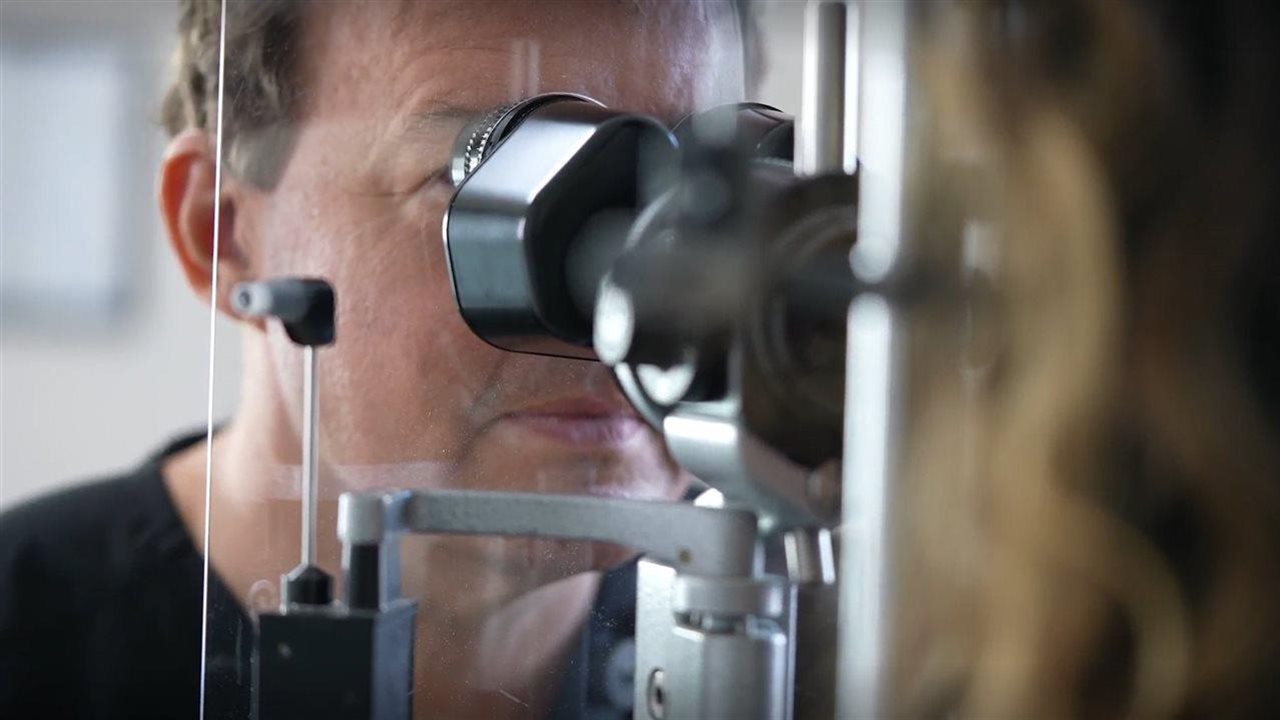2023-01-17T13:01:00
(BPT) – Mental health counselor and avid hiker Chris knew something was going on with his health. He was not only feeling tired all the time, but despite napping every day, he still fell asleep at movies, at work — even while meeting with clients. Chris knew it was time to seek medical help.
After meeting with his doctor and having his symptoms thoroughly evaluated, Chris was ultimately diagnosed with narcolepsy, a chronic neurological disorder affecting the brain’s ability to control sleep-wake cycles. According to the National Institutes of Health, symptoms include excessive daytime sleepiness (EDS), which results in persistent sleepiness throughout the day regardless of how much sleep an individual gets at night. Another symptom can be cataplexy, the sudden, brief loss of muscle strength or tone while you’re awake. Cataplexy is often triggered by strong emotions such as laughter or surprise and can cause the person to collapse completely, but more often affects specific areas of the body such as the hands or parts of the face such as eyelids.
For Chris, EDS was the symptom that impacted him the most day-to-day, resulting in the frequent need to take naps throughout the day. Chris also experiences cataplexy, which started a little later than the EDS. He describes his cataplexy as a mild symptom where he feels a loosening of his facial muscles, which others saw as Chris appearing to have no facial expression.
Finding help for living with narcolepsy
After his diagnosis, Chris regularly saw a sleep specialist who helped him navigate his narcolepsy for several years. Chris noticed a positive change in his symptoms, but eventually had to switch to a new healthcare provider. His new provider reviewed everything from his initial diagnosis and treatment history, to how often he continued to experience symptoms like EDS. Based on this evaluation, Chris and his new provider discussed changing his treatment plan to see if that could further help. His new healthcare provider explained a few treatment options for consideration.
One of those options was WAKIX® (pitolisant) tablets.
Dr. Abhinav Singh, MD, MPH, FAASM, Medical Director at the Indiana Sleep Center, describes WAKIX “as a first-of-its-kind treatment that is FDA approved to treat EDS or cataplexy in adults with narcolepsy, taken once-daily upon waking.”
“People living with narcolepsy also are interested to learn that while the way WAKIX works is not fully understood, it is thought that WAKIX reduces EDS or cataplexy by increasing histamine levels in the brain,” explains Dr. Singh.
Histamine is a natural chemical in the brain that works to help you stay awake by increasing brain activity in areas that help you wake up, as well as decreasing brain activity in areas that make you sleepy, including areas that paralyze your muscles while you are in REM sleep.
In addition, Chris’s healthcare provider detailed how WAKIX is not a controlled substance. According to Dr. Singh, “people living with narcolepsy might also want to consider WAKIX because it is not a stimulant medication.” These were both important to Chris.
During Chris’ discussions with his healthcare provider, they discussed WAKIX dosing which included titration, something new for Chris. “Titration is a process where your healthcare provider starts you at a lower dose and may increase your dose each week to find the right dose for you, up to the maximum recommended dose,” Singh explained.
During his 3-week titration, Chris’ healthcare provider checked in with him to see how he was feeling, and if his EDS was decreasing at all. He reminded Chris that the common side effects could include insomnia, nausea, and anxiety, although these are not all the possible side effects of WAKIX, and that Chris should let him know if he experiences any side effects. Chris encourages those living with narcolepsy to communicate with their healthcare provider about how they are feeling and managing their symptoms, to determine if WAKIX is the right choice for them. A few weeks after Chris was titrated to the dose that was right for him, he noticed that his EDS had started to decrease, along with some of his cataplexy attacks. Dr. Singh notes that “for WAKIX, individual results may vary, and for some patients it may take up to eight weeks to achieve a response.”
Tips for managing life with narcolepsy
Beyond his treatment plan for managing his narcolepsy, Chris also learned management techniques that he shares with others, to help give back whenever he can.
“When I was first diagnosed, online support groups were a very big part of knowing I wasn’t alone in my experience, as I didn’t know anybody who had narcolepsy,” said Chris. “Knowing there were people out there with the same diagnosis and that they’re able to manage their symptoms and give feedback about how to manage my symptoms was huge for me.”
Here are some of the ways Chris manages his narcolepsy day-to-day in addition to medication:
- Connecting with those in the narcolepsy community: Learning from others who live with the disorder and sharing experiences can help reduce feelings of isolation or helplessness.
- Building naps into the day: For Chris, taking at least one nap per day helps him manage his EDS.
- Practicing good sleep hygiene: Chris uses different techniques to sleep better at night. For example, he uses blackout curtains to keep his bedroom dark, which helps him fall asleep and stay asleep better.
Chris also has a wake-up lamp that uses light to mimic the rising sun to wake him up each morning.
“Many patients also find it useful to maintain a regular sleep-wake schedule, to help lessen the impact of their symptoms,” Dr. Singh shared. “Other lifestyle modifications that can help patients manage their symptoms include avoiding alcohol and not having caffeine in the evening.”
“Learning to live with narcolepsy is a marathon and not a sprint,” added Chris. “And for me, having a relationship with my healthcare provider and going through this whole process has been reaffirming, showing me that things can change. And that is a very good thing.”
If you or someone you know is an adult with narcolepsy experiencing EDS or cataplexy, speak with a healthcare provider to see if WAKIX could be an option. Read more about WAKIX below. To see videos about the experiences of Chris and others living with narcolepsy who are taking WAKIX, visit WAKIX.com/wakix-personal-stories.
Indications and Usage
WAKIX is a prescription medicine used to treat excessive daytime sleepiness (EDS) or sudden onset of weak or paralyzed muscles (cataplexy) in adults with narcolepsy.
Important Safety Information
Do not take WAKIX if you are allergic to pitolisant or any ingredient in WAKIX, or if you have severe liver disease.
Tell your healthcare provider about all your medical conditions, including if you have heart rhythm irregularities, were born with a heart condition, or the levels of electrolytes in your blood are too high or too low. WAKIX has an effect on the electrical activity of the heart known as QT/QTc prolongation. Medicines with this effect can lead to disturbances in heart rhythm, which are more likely in patients with risk factors such as certain heart conditions, or when taken in combination with other medicines that affect QT. Tell your healthcare provider about all the other medicines you take.
The risk of QT prolongation may be greater in patients with liver or kidney disease. WAKIX is not recommended in patients with end-stage kidney disease.
The most common side effects seen with WAKIX were insomnia, nausea, and anxiety. Other side effects included headache, upper respiratory infection, musculoskeletal pain, heart rate increased, and decreased appetite. These are not all the possible side effects of WAKIX. Tell your healthcare provider about any side effect that bothers you or that does not go away.
Tell your healthcare provider about all the medicines you take or plan to take, including prescription and over-the-counter medicines. Some medicines can increase the amount of WAKIX that gets into your blood and some medicines can decrease the amount of WAKIX that gets into your blood. The dosage of WAKIX may need to be adjusted if you are taking these medicines.
WAKIX can also decrease the effectiveness of some medicines, including hormonal birth control methods. You should use an alternative non-hormonal birth control method during treatment with WAKIX and for at least 21 days after discontinuation of treatment.
Tell your healthcare provider if you are pregnant or planning to become pregnant. There is a pregnancy exposure registry that monitors pregnancy outcomes in women who are exposed to WAKIX during pregnancy. You are encouraged to enroll in the WAKIX pregnancy registry if you become pregnant while taking WAKIX. To enroll or obtain information from the registry, call 1-800-833-7460.
The safety and effectiveness of WAKIX have not been established in patients less than 18 years of age.
You are encouraged to report negative side effects of prescription drugs to the FDA. Visit www.fda.gov/medwatch, or call 1-800-FDA-1088. You can also report negative side effects to Harmony Biosciences at 1-800-833-7460.
Please see Full Prescribing Information.
For more information about living with narcolepsy, visit WAKIX.com/living-with-narcolepsy.
WAKIX is a registered trademark of Bioprojet Europe, Ltd.
© 2022 Harmony Biosciences. All rights reserved.
US-WAK-2200230/Dec 2022





















